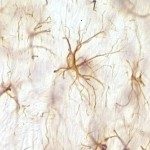Lien vers Pubmed [PMID] – 30726427
Lien DOI – S1726-4634201800040057310.17843/rpmesp.2018.354.3101
Rev Peru Med Exp Salud Publica ; 35(4): 573-580
To produce recombinant single-chain antibodies from alpaca that will bind to the excreted-secreted (ES) Fasciola hepatica antigen with high affinity and specificity, so as to develop new diagnostic technologies of human and animal fascioliasis.A gene bank of DNA of the variable dominions of heavy single-chain antibodies (VHH) has been created, based on mononuclear cells of peripheral blood of an alpaca immunized with the ES antigen of F. hepatica. The gene bank was screened with the ES antigen by differential phage display, selecting ten VHH that bind specifically to ES. The anti-ES VHH was cloned in an expression vector, the recombinant protein (VHH-ES1) of 15.3 kDa was produced by fermentation in E. coli and purified to homogeneity by affinity chromatography. The binding of VHH-ES1 to the ES antigen was evaluated by ELISA using VHH-ES1 as capture antibody, policlonal anti-ES serum of rabbit and conjugated rabbit anti IgG with radish peroxidase.A VHH that binds to the ES antigen (VHH-ES1) has been identified through differential phage display and produced by fermentation in E. coli; this corresponds to an antibody of the long-hinge IgG2 subclass. The binding of the VHH-ES1 antibody to the antigen shows linearity with respect to the concentration of ES in the 50-5,000 ng/mL range and the limit of detection value of the antigen is in the 30-170 ng/mL range of ES (R2=0.99).The VHH-ES1 binds with affinity and specificity to the ES antigen of F. hepatica and is a promissory antibody to be assessed for the development of new fascioliasis diagnostic technologies.Producir anticuerpos recombinantes de cadena única de alpaca que se unan con alta afinidad y especificidad al antígeno excretado-secretado (ES) de Fasciola hepatica para el desarrollo de tecnologías nuevas de diagnóstico de fascioliasis humana y animal.Se ha construido una genoteca de cADNde los dominios variables de anticuerpos de cadena única pesada, conocidos como VHH, a partir de células mononucleares de sangre periférica de una alpaca inmunizada con el antígeno ES de F. hepatica. La genoteca fue tamizada con el antígeno ES por despliegue diferencial de fagos (phage display), seleccionando diez VHH que se unen específicamente a ES. El VHH anti ES fue clonado en un vector de expresión, la proteína recombinante (VHH-ES1) de 15,3 kDa fue producida por fermentación en E. coli y purificada a homogeneidad por cromatografía de afinidad. La unión del VHH-ES1 al antígeno ES fue evaluada por ELISA usando VHH-ES1 como anticuerpo de captura, antisuero policlonal anti-ES de conejo y conjugado anti IgG de conejo con peróxidasa de rábano.Se ha identificado y producido un VHH-ES1 recombinante que se une al antígeno ES (VHH-ES1) que correspondía a un anticuerpo de la subclase IgG2 de bisagra larga. La unión del anticuerpo VHH-ES1 al antígeno muestra linealidad respecto a la concentración de ES en el rango de 50-5000 ng/mL y el valor límite de detección del antígeno está en el rango de 30-170 ng/mL de ES (R2=0,99).El VHH-ES1 se une con afinidad y especificidad al antígeno ES de F. hepatica y es un anticuerpo promisorio a evaluar para el desarrollo de nuevas tecnologías de diagnóstico de fascioliasis.

